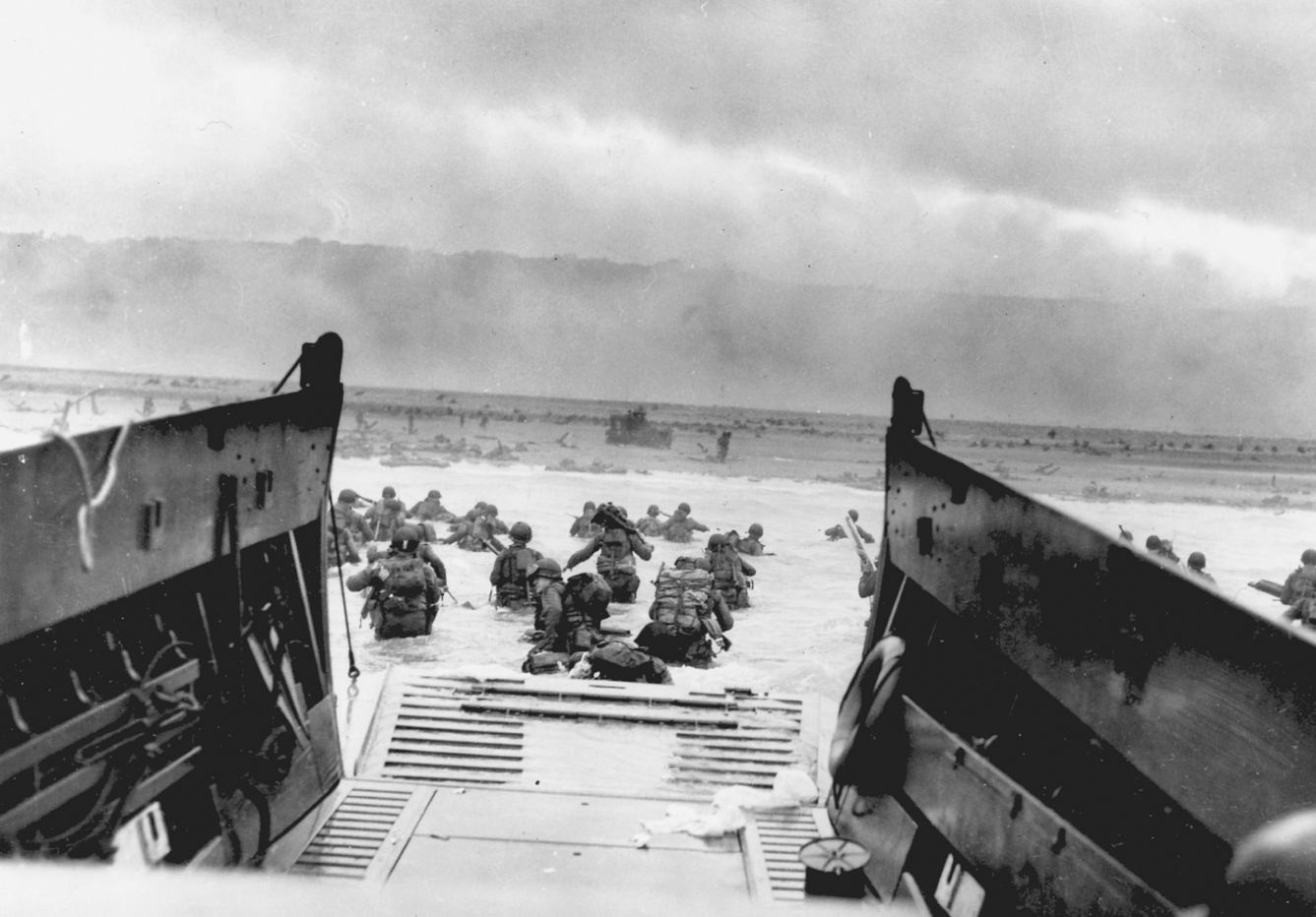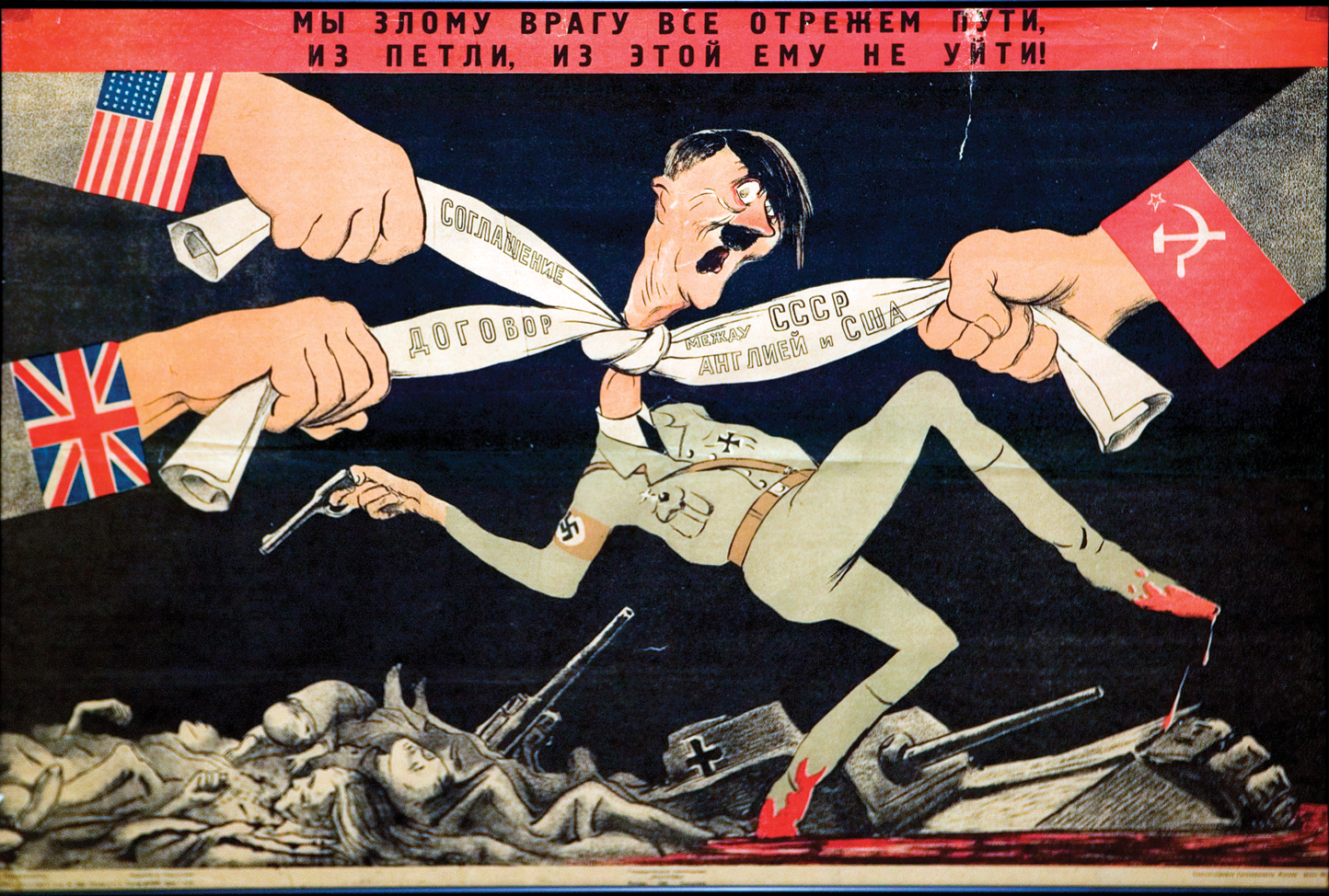From Bombing Raids to Berlin.
Printed Page 701 Chapter Chronology
From Bombing Raids to Berlin. While the Allied campaigns in North Africa and Italy were under way, British and American pilots flew bombing missions from England to German-occupied territories and to Germany itself as an airborne substitute for the delayed second front on the ground. During night raids, British bombers targeted general areas, hoping to hit civilians, create terror, and undermine morale. Beginning with Paul Tibbets's flight in August 1942, American pilots flew heavily armored B-17s from English airfields in daytime raids on industrial targets vital for the German war machine.
German air defenses took a fearsome toll on Allied pilots and aircraft. In 1943, two-thirds of American airmen did not survive to complete their twenty-five-mission tours of duty. In all, 85,000 American airmen were killed in the skies over Europe. Many others were shot down and held as prisoners of war. In February 1944, the arrival of America's durable and deadly P-51 Mustang fighter gave Allied bombers superior protection. The Mustangs slowly began to sweep the Luftwaffe from the skies, allowing bombers to penetrate deep into Germany and pound civilian and military targets around the clock.
In November 1943, Churchill, Roosevelt, and Stalin met in Teheran to discuss wartime strategy and the second front. Roosevelt conceded to Stalin that the Soviet Union would exercise de facto control of the eastern European countries that the Red Army occupied as it rolled back the still-potent German Wehrmacht. Stalin agreed to enter the war against Japan once Germany finally surrendered, in effect promising to open a second front in the Pacific theater. Roosevelt and Churchill promised that they would at last launch a massive second-front assault in northern France, code-named Overlord, scheduled for May 1944.
General Eisenhower was assigned overall command of Allied forces, and mountains of military supplies were stockpiled in England. The huge deployment of Hitler's armies in the east, which were trying to halt the Red Army's westward offensive, left too few German troops to stop the millions of Allied soldiers waiting to attack France. More decisive, years of Allied air raids had decimated the German Luftwaffe, which could send aloft only 300 fighter planes against 12,000 Allied aircraft.

After frustrating delays caused by stormy weather, Eisenhower launched the largest amphibious assault in world history on D Day, June 6, 1944 (Map 25.4). Allied soldiers finally succeeded in securing the beachhead. An officer told his men, "The only people on this beach are the dead and those that are going to die — now let's get the hell out of here." And they did, finally surmounting the cliffs that loomed over the beach and destroying the German defenses. One GI who made the landing recalled the soldiers "were exhausted and we were exultant. We had survived D Day!"
D Day
June 6, 1944, the date of the Allied invasion of northern France. D Day was the largest amphibious assault in world history. The invasion opened a second front against the Germans and moved the Allies closer to victory in Europe.
Map Activity 1 for Chapter 25

Within a week, a flood of soldiers, tanks, and other military equipment propelled Allied forces toward Germany. On August 25, the Allies liberated Paris from four years of Nazi occupation. As the giant pincers of the Allied and Soviet armies closed on Germany in December 1944, Hitler ordered a counterattack to capture the Allies' essential supply port at Antwerp, Belgium. In the Battle of the Bulge (December 16, 1944, to January 31, 1945), as the Allies termed it, German forces drove fifty-five miles into Allied lines before being stopped at Bastogne. More than 70,000 Allied soldiers were killed, including more Americans than in any other battle of the war. The battle fatally depleted Hitler's reserves.
In February 1945, while Allied armies relentlessly pushed German forces backward, Churchill, Stalin, and Roosevelt met secretly at the Yalta Conference (named for the Russian resort town where it was held) to discuss their plans for the postwar world. Roosevelt managed to secure Stalin's promise to permit votes of self-determination in the eastern European countries occupied by the Red Army. The Allies pledged to support Jiang Jieshi (Chiang Kai-shek) as the leader of China. The Soviet Union obtained a role in the postwar governments of Korea and Manchuria in exchange for entering the war against Japan after the defeat of Germany.
Visual Activity for Chapter 25

The "Big Three" also agreed on the creation of a new international peacekeeping organization, the United Nations (UN). All nations would have a place in the UN General Assembly, but the Security Council would wield decisive power, and its permanent representatives from the Allied powers — China, France, Great Britain, the Soviet Union, and the United States — would possess a veto over UN actions. The Senate ratified the United Nations Charter in July 1945 by a vote of 89 to 2, reflecting the triumph of internationalism during the nation's mobilization for war.
While Allied armies sped toward Berlin, Allied warplanes dropped more bombs after D Day than in all the previous European bombing raids combined. By April 11, Allied armies reached the banks of the Elbe River and paused while the Soviets smashed into Berlin. The Red Army captured Berlin on May 2. Hitler had committed suicide on April 30, and the provisional German government surrendered unconditionally on May 7. The war in Europe was finally over, with the sacrifice of 135,576 American soldiers, nearly 250,000 British troops, and 9 million Russian combatants.
Roosevelt did not live to witness the end of the war. On April 12, he suffered a fatal stroke. Americans grieved for the man who had led them through years of depression and world war, and they worried about his untested successor, Vice President Harry Truman.